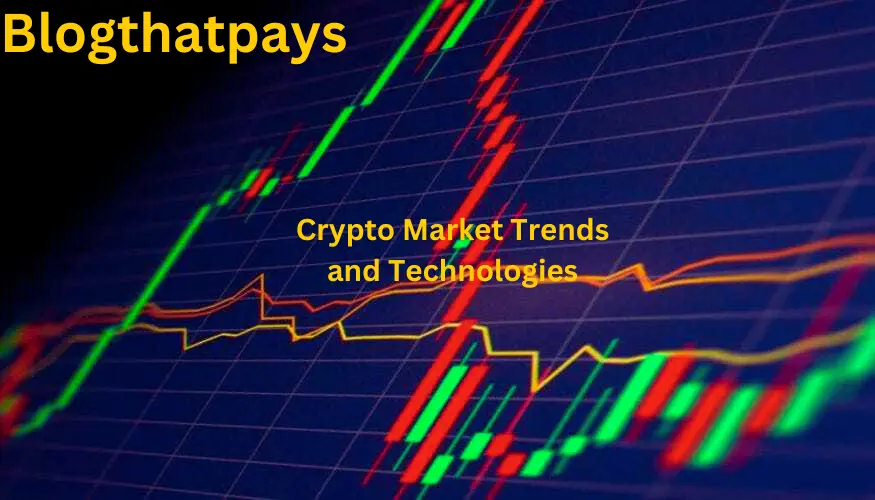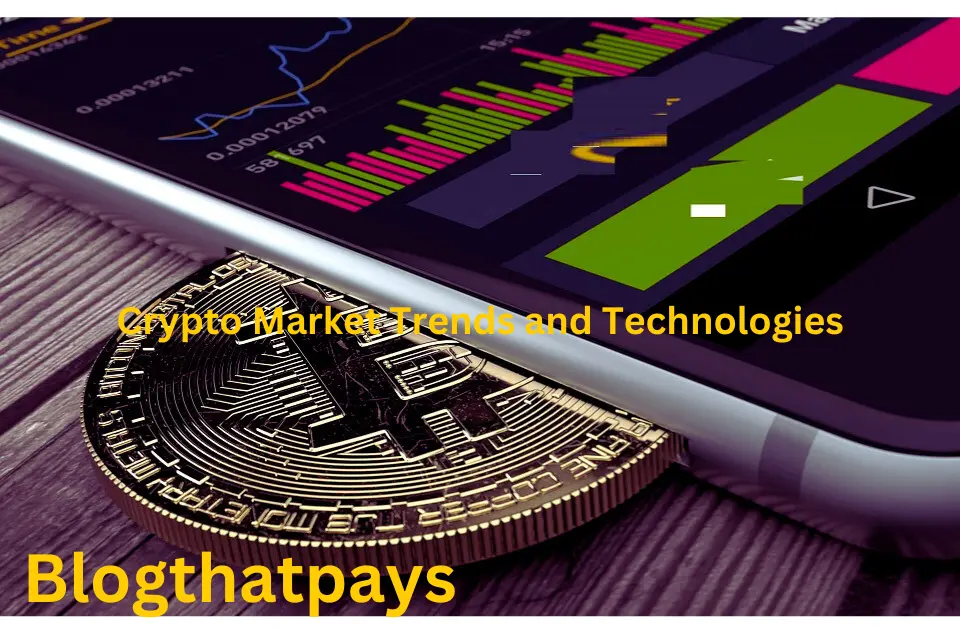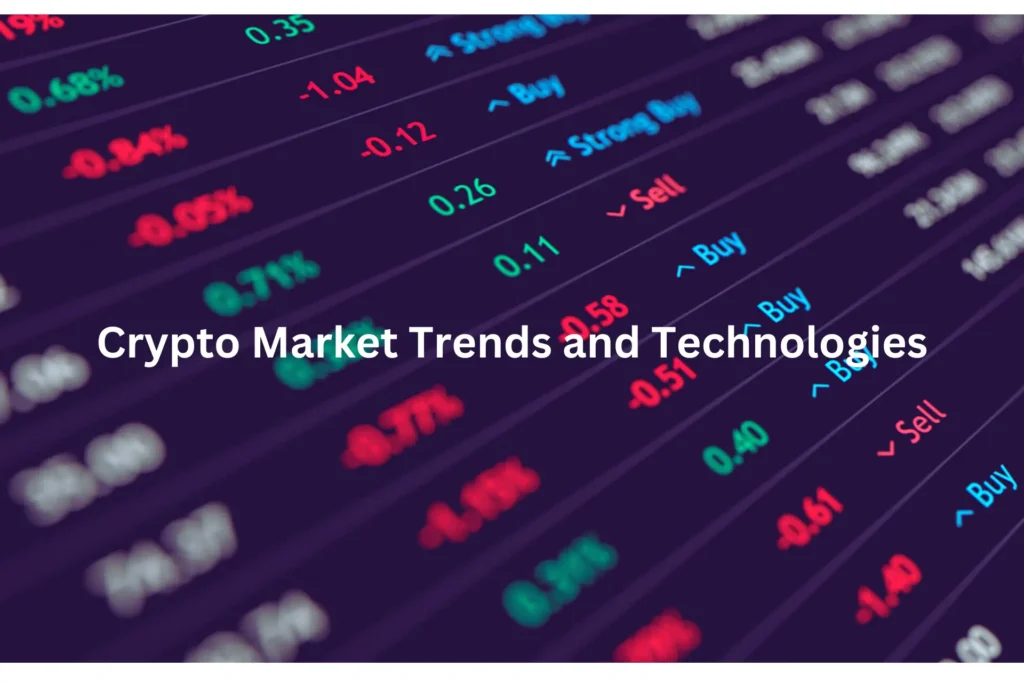Crypto Market Trends and Technologies in 2024

As we continue navigating through 2024, the ever-evolving landscape of the Crypto Market Trends and Technologies continues to captivate the interests of investors, developers, and everyday users alike. With the rapid development of new technologies and the unfolding of new trends, it has become essential for those engaged in this ecosystem to stay informed and well-prepared. This article focuses on the most significant market trends and technological advancements that are shaping the crypto industry.
Blockchain technology, the fundamental backbone of crypto, has been experiencing groundbreaking innovation in recent years, bringing forth improved scalability, security, and usability. Emerging consensus mechanisms and the adoption of second-layer solutions not only solve challenges that plagued early blockchain iterations but also add a myriad of functionalities not previously attainable. The integration of decentralized finance (DeFi), non-fungible tokens (NFTs), and metaverses into the mainstream discourse have opened novel applications and opportunities for both retail and institutional investors.
Today, various regulatory frameworks are emerging in various regions, addressing concerns regarding the stability, security, and legality of Crypto Market Trends and Technologies assets. Furthermore, the increasing participation of corporations, governments, and celebrity endorsements has brought a higher level of credibility, attention, and adoption to the space. In light of these developments, the importance of understanding and analyzing crypto market trends and emerging technologies cannot be overstated to ensure that individuals and businesses make informed decisions in this ever-changing landscape.
Overview of the Crypto Market in 2024
The crypto market in 2024 has shown significant growth and diversification compared to its earlier years. With a broader acceptance of cryptocurrencies among the general public, various industries have begun integrating blockchain technologies into their systems. This section will briefly cover the main trends and technologies that are shaping the crypto landscape in 2024.
Trends in Crypto Market
- Decentralized Finance (DeFi): DeFi platforms have gained popularity, offering alternative financial services such as lending, borrowing, and staking. They continue to grow at an exponential rate, with more established financial institutions exploring DeFi integration.
- Non-Fungible Tokens (NFTs): NFTs have become a prominent force in the digital art, gaming, and collectibles industries. The unique properties of NFTs – such as verifiable ownership and rarity – make them valuable assets to creators and collectors alike.
- Regulatory Frameworks: Governments around the world have moved towards implementing clearer regulations for cryptocurrencies, fostering increased adoption among businesses and investors. This has led to increased trust in the market and a reduction in various fraud and illegal activities.
Technologies in Focus
- Interoperability: Cross-chain technologies enable seamless interaction between different blockchain networks. By bridging the gap between various protocols, interoperability promotes a more cohesive crypto ecosystem by allowing users to access distinct services without the need for multiple wallets.
- Layer 2 Scaling Solutions: To address slow transaction times and high fees, layer 2 solutions improve the scalability of blockchain networks by processing transactions off-chain. Examples include Ethereum’s Optimistic Rollups and Bitcoin’s Lightning Network.
- Privacy Enhancement: Technologies such as Zero-Knowledge Proofs and Mimblewimble offer users increased privacy by obfuscating transaction details. This advances citizen protection without hampering data transparency on the blockchain.
- Decentralized Identity (DID): DID solutions are disrupting traditional identity management systems by empowering users to own and control their personal data. With the integration of these technologies, there is less reliance on centralized authorities to validate user identities and authorize transactions.
Taking a brief glimpse into the crypto landscape in 2024, it is evident that advancements in technology and broader market trends have paved the way for increased adoption of cryptocurrencies and blockchain innovations. As these developments continue to make their impact, the crypto market is set to experience further growth and diversification in the years to come.
Emerging Cryptocurrencies and Tokens
As the crypto landscape continues to evolve, there are several remarkable developments worth taking a closer look at. This section highlights the most notable emerging cryptocurrencies and tokens within three major domains: DeFi Innovations, NFT Evolution, and New Token Economics.
Defi Innovations
Decentralized Finance (DeFi) has grown significantly in recent years. It has introduced several novel cryptocurrencies that are changing the financial landscape. Some of these emerging DeFi assets include:
- Aave: An open-source, non-custodial lending, and borrowing platform built on Ethereum, offering a decentralized money market.
- Balancer: An automated market maker (AMM) allowing for programmable token pools with customizable trading fees.
- Curve: An exchange liquidity pool designed for (mostly) stablecoin trading, optimizing for low slippage and low fees.
| Cryptocurrency | Primary Use Case | Blockchain |
|---|---|---|
| Aave | Decentralized Lending & Borrowing | Ethereum |
| Balancer | Automated Market Making | Ethereum |
| Curve | Stablecoin Exchange | Ethereum |
NFT Evolution
Non-fungible tokens (NFTs) have taken the art, music, and gaming industries by storm. The NFT market has experienced significant growth with platforms such as OpenSea, Rarible, and SuperRare, attracting artists and collectors alike. Among the most promising NFT-focused tokens in 2024, we find:
- Efinity: Developed by Engine, Efinity is a scalable NFT blockchain for gaming, art, and other collectibles.
- Aleph.im: A decentralized cloud project designed to support NFT storage, indexing, and querying.
| Cryptocurrency | Primary Use Case | Blockchain |
|---|---|---|
| Efinity | Scalable NFT Blockchain for Gaming and Art | Enjin |
| Aleph.im | Decentralized Cloud for NFT Storage & Indexing | Ethereum |
New Token Economics
To further empower users and drive adoption, there has been a resurgence of interest in new token economics. Some promising examples are:
- Frax: A fractional-algorithmic stablecoin project that leverages a combination of collateral-backed and algorithmic approaches.
- Algorand: A proof-of-stake (PoS) blockchain with a novel consensus mechanism called Pure PoS that improves scalability and security.
| Cryptocurrency | Primary Use Case | Blockchain |
|---|---|---|
| Frax | Fractional-Algorithmic Stablecoin Mechanism | Ethereum |
| Algorand | Proof-of-Stake Blockchain with Pure PoS Consensus | Algorand |
These developments in DeFi, NFT, and token economics technologies demonstrate the evolving nature of the crypto market and the continued advancement of distributed ledger technology. Newcomers and established projects alike are strengthening the ecosystem, ensuring a more diverse, transparent, and accessible future.
Advancements in Blockchain Technology
Layer 2 Solutions
In recent years, Layer 2 solutions have gained popularity as a way of boosting transaction throughput and decreasing latency, while keeping the security and decentralization of the underlying blockchain. Some prominent examples of Layer 2 solutions currently in use are the Lightning Network for Bitcoin, and Optimism and zkSync for Ethereum.
These solutions primarily work by settling transactions off-chain and periodically synchronizing with the main chain. The use of off-chain transactions greatly reduces on-chain congestion, ultimately leading to lower transaction fees and faster processing times. An added benefit is the potential for improved privacy, as off-chain transactions can be routed through various nodes to mask their origins.
Interoperability Protocols
As the number of blockchain protocols has grown, so needs interoperability between these platforms. In 2024, several interoperability platforms have emerged to allow seamless interaction between different blockchains:
- Polkadot: Connecting multiple blockchains through a central relay chain, Polkadot enables cross-chain transfers of data and assets.
- Cosmos: Utilizing a hub-and-zone model, Cosmos connects multiple blockchains while maintaining their original consensus algorithms.
- Wanchain: Providing a decentralized platform for cross-chain smart contracts execution, Wanchain merges separate ecosystems through a seamless and secure connection.
These protocols have significantly enhanced the blockchain landscape, allowing users to move assets and execute smart contracts across multiple platforms with ease.
Proof-of-Stake Developments
The shift from proof-of-work (PoW) to proof-of-stake (PoS) consensus mechanisms has been a hallmark of advancing blockchain technology in recent years. PoS provides numerous benefits over traditional PoW:
- Energy efficiency: PoS doesn’t rely on massive amounts of computing power, making it more environmentally friendly.
- Increased security: PoS makes it more expensive for an attacker to control the network.
- Decentralization: PoS enables a more equal distribution of network power, preventing centralization.
Major projects have adopted PoS and its variants:
| Project | Consensus Mechanism |
|---|---|
| Ethereum 2.0 | Proof-of-Stake (upcoming) |
| Cardano | Ouroboros |
| Polkadot | Nominated Proof-of-Stake |
| Algorand | Pure Proof-of-Stake |
The increasing adoption of PoS marks a significant transition in the blockchain industry, emphasizing the importance of sustainability, security, and decentralization.
Regulatory Landscape and Compliance
Global Crypto Regulations
As of 2024, global crypto regulations have undergone significant changes. A common trend among countries is the move towards increased regulatory clarity, enabling innovation to flourish while ensuring investor and consumer protection. Key policy positions from major countries are summarized below:
| Country | Regulatory Position |
|---|---|
| United States | A comprehensive regulatory framework, supervised by several authorities such as the SEC. |
| European Union | Unified crypto regulations, with the MiCA framework leading the charge. |
| China | Maintains a strict stance on cryptocurrencies; mining and trading are banned. |
| Japan | Supportive in terms of innovation; has specific licensing requirements for exchanges. |
| South Korea | Crypto-friendly environment, with clear taxation laws and reasonable regulations. |
Decentralized Governance
In the crypto landscape of 2024, decentralized governance has become a critical aspect. It aims to promote transparency, fairness, and inclusivity within the blockchain ecosystem. Decentralized Autonomous Organizations (DAOs) have emerged as prime examples of this concept.
Governance tokens held by users empower them to influence the direction of the platform and its protocols. This has paved the way for decision-making processes in various realms, including protocol changes, fee structures, and future developments.
Governments and regulators, on the one hand, have found a balance between encouraging decentralized governance and mitigating the risks involved.
Privacy and Security Laws in Crypto Market
Privacy and security in crypto market have remained top priorities across the crypto industry. Governments worldwide continue to emphasize strict adherence to privacy norms such as the European Union’s General Data Protection Regulation (GDPR).
Blockchain platforms have implemented privacy-enhancing features, such as zero-knowledge proofs and confidential transactions, to comply with these norms.
Simultaneously, security standards for digital asset exchanges, wallet providers, and smart contract developers have evolved over time. Regulatory authorities have issued guidelines and frameworks for cybersecurity and risk management, which companies must abide by to remain in compliance.
In summary, the regulatory landscape and compliance in 2024 have brought a sense of clarity and stability to the industry, fostering a more conducive environment for innovation and growth.
Investment Strategies and Market Analysis
Crypto Trading Bots
Crypto trading bots have continued to gain popularity in the investment landscape. These automated trading systems operate 24/7, leveraging advanced algorithms to execute trades based on predetermined market conditions and strategies. There are various types of trading bots, each with unique features and functionality. Some popular types include:
- Arbitrage bots: Identify and exploit price discrepancies across multiple exchanges.
- Market-making bots: Place limit orders to capitalize on the bid-ask spread and manage inventory.
- Trend-following bots: Track market trends and make trades based on price movements and technical indicators.
Choosing the right trading bot mainly depends on the investor’s preferred strategies, risk tolerance, and technical expertise. It’s essential to backtest the bot on historical market data and thoroughly evaluate its performance before deploying it on live trades.
Portfolio Diversification
Investing in multiple cryptocurrencies may help to reduce risk and optimize returns. Diversifying one’s portfolio is an effective investment strategy, as it minimizes the chances of significant losses due to market fluctuations in a single crypto asset. Some common diversification approaches are:
- Asset allocation: Spreading investments across different categories of cryptocurrencies, such as large-cap, mid-cap, and small-cap assets.
- Sector allocation: Investing in various sectors within the crypto market, such as DeFi, IoT, or privacy coins.
- Geographical allocation: Diversifying holdings based on the origin and regulatory environment of the crypto projects.
A well-diversified portfolio can provide investors with a degree of protection during market downturns and enhance long-term growth potential.
Market Prediction Tools
The application of market prediction tools has steadily grown in the crypto space, assisting investors in analyzing market trends and making informed decisions. Some notable prediction tools include:
- Technical analysis: Examining historical price and volume data to identify patterns and trends that may suggest future price movements.
- Sentiment analysis: Gauging market sentiment by analyzing data from social media platforms, news articles, and forum discussions.
- On-chain analytics: Assessing blockchain data, such as transaction volume, active addresses, and network hash rate, to derive insights about the health of a cryptocurrency.
These tools can be utilized individually or in combination to develop a comprehensive market analysis. However, it’s crucial to note that past performance and data may not always accurately predict future outcomes. Investors should use these tools to supplement their knowledge and intuition, treat them as a guide, and not solely rely on them for investment decisions.










8 Comments